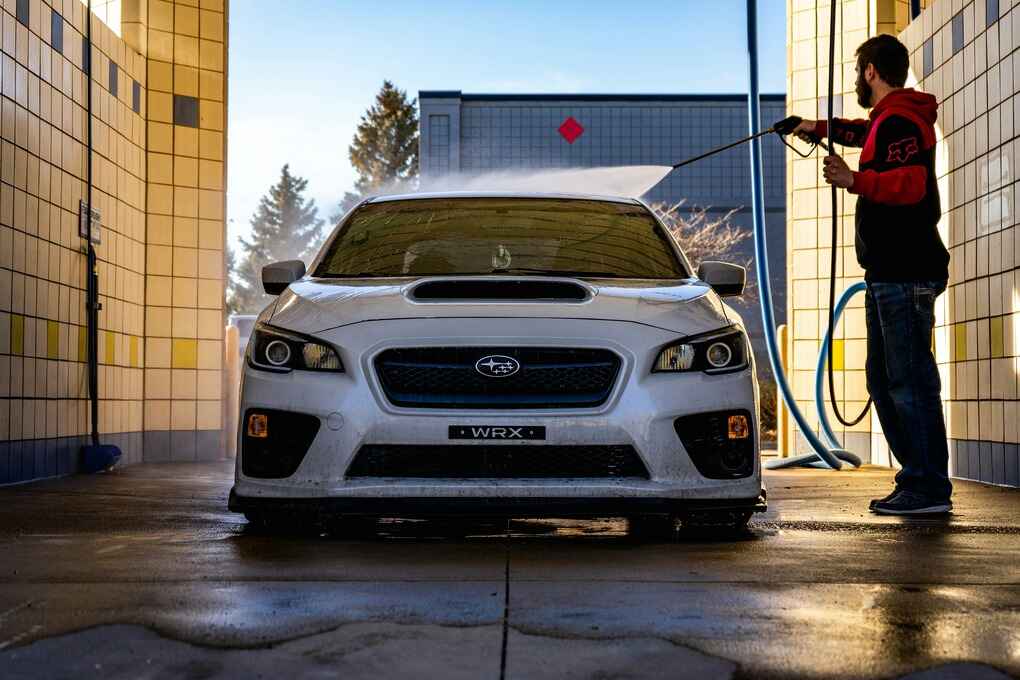Ah, the humble pressure washer. It’s more than just a fancy garden hose – it’s a cleaning powerhouse capable of tackling grime, dirt, and stains that would leave even the strongest scrubbing brush whimpering.
But wielding this mighty tool effectively requires knowledge and technique. Fear not, cleaning warriors! This guide brings you 11 essential pressure washer tips to help you master the art of high-powered cleaning like a pro (and, crucially, safely).
Before we dive in, a quick heads-up: This guide focuses on electric pressure washers, the most common type for home use in the USA.
If you’re rocking a gas-powered beast, some details might differ. Always consult your machine’s manual for specific instructions and safety guidelines.
Ready to unleash your inner cleaning champion? Let’s get started!
1. Know Your Pressure (and How to Adjust It)
Pressure washers aren’t one-size-fits-all. Different surfaces require different levels of pressure to be cleaned effectively without damage. Here’s a quick breakdown:
Low pressure (under 1,500 PSI): Perfect for delicate surfaces like painted wood, siding, and windows.
Medium pressure (1,500-2,500 PSI): Handles tougher jobs like concrete patios, decks, and fences.
High pressure (over 2,500 PSI): Reserved for the really grimy stuff like heavily stained concrete or removing graffiti (use with caution!).
Most electric pressure washers come with adjustable pressure settings. Consult your manual to understand your machine’s capabilities and choose the right setting for the job.
Remember, starting low and increasing pressure gradually is always safer than blasting everything with full force.
2. Choose the Right Nozzle: It’s Not Just About Looks
Imagine trying to write a novel with a crayon – not ideal, right? The same goes for using the wrong nozzle with your pressure washer. Different nozzles offer different spray patterns and intensities, each suited for specific tasks:
0-degree (pencil jet): Powerful but precise, great for concentrated cleaning like removing paint or graffiti. Use with caution and keep a safe distance!
15-degree: A good balance between power and coverage, ideal for cleaning concrete, driveways, and decks.
25-degree: More gentle on delicate surfaces like siding and painted wood, offering wider coverage.
40-degree: Perfect for rinsing soap, applying cleaning solutions, and tackling large areas like patios.

Most pressure washers come with a basic set of nozzles. Invest in additional ones tailored to your cleaning needs for maximum efficiency.
3. Befriend the Soap: Sudsy Solutions for Extra Shine
Pressure washing isn’t just about blasting water – it’s about cleaning water. Adding soap or detergent enhances cleaning power, lifts stubborn dirt, and leaves surfaces sparkling. Use a pressure washer-safe detergent specifically formulated for your machine and the cleaning task at hand. Remember to rinse thoroughly after applying soap to avoid residue build-up.
4. Safety First: Gear Up and Stand Your Ground
Pressure washers are powerful tools, and treating them with respect is crucial. Here’s your safety checklist:
Always wear eye protection (goggles or a face shield) to shield yourself from debris and cleaning solution splashes.
Don’t forget closed-toe shoes and long pants to protect your feet and legs from kicked-up dirt and water.
Maintain a safe distance between the nozzle and the cleaning surface, especially with high-pressure settings.
Never point the nozzle directly at yourself or others. Consider using a safety lock feature if your machine has one.
Be mindful of electrical cords and keep them away from water.
5. Master the Technique: Don’t Just Spray and Pray
There’s a finesse to pressure washing that goes beyond brute force. Here are some tips for efficient and effective cleaning:
Start from the top and work your way down to avoid washing dirt onto already cleaned areas.
Move the nozzle in a sweeping motion instead of holding it in one spot to prevent damage.
Hold the nozzle at a slight angle to avoid digging into the surface.
Overlap your strokes to ensure even cleaning and avoid missed spots.
Practice on a test area unfamiliar with the pressure washer settings and nozzle before tackling the main event.
6. Prep Work Pays Off: Clear the Area and Protect What Matters
Cover windows, doors, and electrical outlets with plastic sheeting or drop cloths to prevent water intrusion.
Move parked vehicles, bikes, and outdoor furniture to a safe distance.
Alert neighbors if your cleaning project might generate noise or overspray.
Pay attention to environmental regulations in your area regarding water runoff and detergent disposal.
7. Embrace the Power of Accessories: Enhance Your Cleaning Arsenal
Beyond the basic pressure washer and nozzles, consider these handy accessories for specific cleaning tasks:
Turbo nozzle: Spins for extra cleaning power on tough stains and grime.
Soap tank: Attaches to the machine for convenient application of cleaning solutions.
Surface cleaner: Creates an even spray pattern for efficient cleaning of large flat surfaces.
Extension wand: Provides extra reach for hard-to-access areas like gutters and high siding.
8. Maintenance Matters: Keep Your Washer Running Smoothly|Pressure Washer Tips
Like any hardworking tool, your pressure washer deserves proper care. Follow these maintenance tips for a long and healthy cleaning life:
Rinse the machine with clean water after each use to remove soap residue and prevent clogs.
Store the machine indoors in a cool, dry place to protect it from the elements.
Winterize your pressure washer if you live in a climate with freezing temperatures. Consult your manual for specific instructions.
Clean and replace filters regularly to maintain optimal performance.
9. Troubleshooting Tips: Don’t Panic, You Got This!
Even the most seasoned pressure-washer warriors encounter hiccups now and then.
Low pressure: Check for clogged nozzles, hoses, or filters. Ensure the water source is turned on and has sufficient pressure.
The machine won’t start: Verify the power cord is securely plugged in and the outlet is working.
Soap not dispensing: Ensure the soap tank is filled and properly connected. Check for clogged lines or malfunctioning injectors.
If you encounter a problem beyond your troubleshooting skills, refer to your manual or consult a qualified service technician.
10. Go Green, Clean Green: Eco-Friendly Pressure Washing Practices
Being a responsible cleaner extends beyond sparkling surfaces. Here are some tips for eco-friendly pressure washing:
Use biodegradable cleaning products that are safe for people, pets, and the environment.
Minimize water usage by choosing the right nozzle and pressure for the job, and avoiding unnecessary rinsing.
Capture and reuse runoff water for watering plants or other non-potable uses (check local regulations).
Dispose of used cleaning solutions and filters responsibly according to local guidelines.
11. Beyond the Basics: Expand Your Cleaning Horizons
Now that you’ve mastered the fundamentals, unlock your pressure washer’s full potential with these advanced techniques:
Deck restoration: Remove old stains and prepare wood for refinishing.
Paver cleaning: Renew the look of your patio or walkway.
Car washing: Tackle tough grime and achieve a showroom shine (use low pressure for delicate car parts).
Pool and fountain cleaning: Remove algae and grime for a sparkling oasis.
Remember, safety and responsible practices are paramount while exploring new cleaning challenges.
Frequently Asked Questions (FAQs)
Q: What pressure washer PSI do I need?
A: It depends on your cleaning needs. For most home projects, a 1,500-2,500 PSI electric pressure washer is sufficient. Higher PSI machines are best for heavy-duty tasks but require extra caution and skill.
Q: Where can I rent a pressure washer?
A: Many home improvement stores and equipment rental companies offer pressure washer rentals.
Q: How often should I pressure wash my house?
A: Once or twice a year is recommended, depending on your climate and how dirty your siding gets.
Q: Is pressure washing bad for paint?
A: Not if done correctly. Using low pressure and the right technique is crucial to avoid damaging paint. Test an inconspicuous area first.
By following these helpful tips and best practices, you’ll be well on your way to becoming a pressure-washing pro. Remember, safety, responsible cleaning, and a little practice go a long way in achieving sparkling results you





